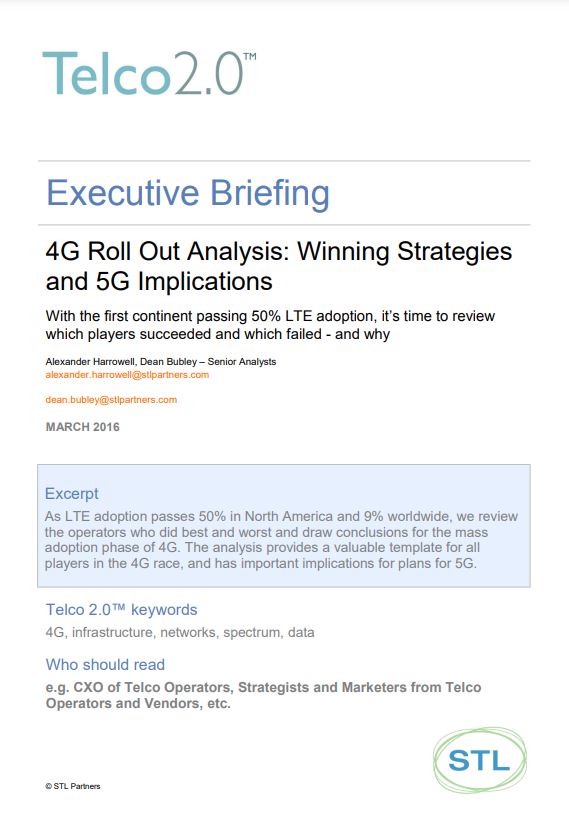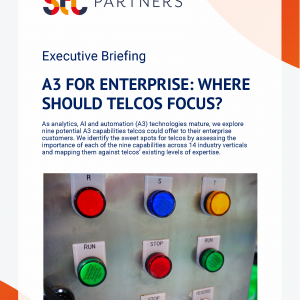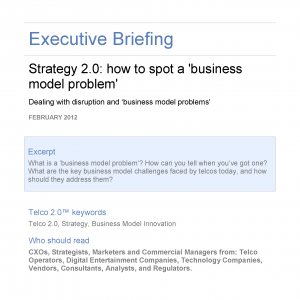4G Roll Out Analysis: Winning Strategies and 5G Implications
£1,000.00 excl VAT
As LTE adoption passes 50% in North America and 9% worldwide, we review the operators who did best and worst and draw conclusions for the mass adoption phase of 4G. The analysis provides a valuable template for all players in the 4G race, and has important implications for plans for 5G.
Description
Format: PDF filePages: 35 pagesCharts: 20Author: Alexander Harrowell, Dean BubleyPublication Date: March 2016
Table of Contents
- Executive Summary
- Identifying & Analysing Key Operators
- A Design for Success
- Parameters
- Commercial Options
- What Strategy Did the Top Eight Adopt?
- Conclusions on the Network for the top Eight
- Conclusions on the Commercial Strategy
- Getting It Wrong
- Operator Case Studies
- Conclusions and recommendations
Table of Figures
- Figure 1: 8 out of 40 MNOs made the cut for further analysis
- Figure 2: The fastest-growing 4G operators are either holding or gradually increasing their EBITDA margins
- Figure 3: Scale helps, but less than you might think
- Figure 4: A strategy matrix for 4G operators
- Figure 5: An introduction to carrier aggregation
- Figure 6: Parameters of our 8 leading 4G deployers
- Figure 7: MTS holds onto margins as data volumes surge
- Figure 8: Wind’s data revenue gains now offset losses from voice entirely, at 37% margins
- Figure 9: VZW’s service margin soars despite the price disruption
- Figure 10: AT&T service margins are also high and rising
- Figure 11: Service margins are rising strongly at 3UK
- Figure 12: Six operators who are struggling to escape the lower-left quadrant
- Figure 13: Sprint and T-Mobile are playing the same game but only one is winning
- Figure 14: Sprint toned down the smartphone bonanza in 2015
- Figure 15: Vodafone’s European OpCos are improving, but it’s been a hard road
- Figure 16: Vodafone Germany’s turnaround plan – 1800MHz plus backhaul
- Figure 17: Project Spring still hasn’t filled the fibre gap
- Figure 18: Free, despite being the smallest and latest to start of the French MNOs, had an outstanding score on our latency index
- Figure 19: T-Mobile USA’s latency performance is market-leading on a blended 3G/4G basis
- Figure 20: T-Mobile USA generates fewer high latency events than any US operator
Technologies and industry terms referenced include: 4G, 5G, data, infrastructure, Networks, spectrum


